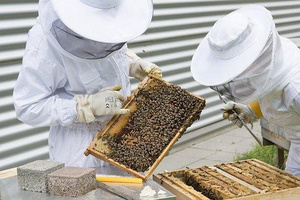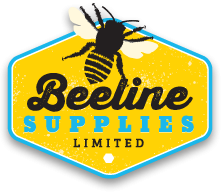Bee Keeping

Defining Manuka Honey: where we are and how we got here
This article, written by Graham Wood, reviews the development of the MPI definition of manuka honey. The aim is firstly to collect the information in one place and secondly to stimulate constructive contributions, in order to guide future development of the definition.
Beekeeping 101
Frank Lindsay presented this very informative Powerpoint at the APINZ conference in Blenheim in 2018. From Frank's over 50 years of beekeeping experience this presentation contains a wealth of information and helpful tips, and includes additional useful links.
Hive Checks & Record Keeping
Keeping an accurate record of what is happening in your hive(s) is very important. This includes observations prior to opening your hive, as well as what is happening in the hive each time you open it/them. Frank Lindsay has produced a set of guidelines and a hive record check list that can be used for keeping accurate records.
Catching Swarms
Catching a swarm can be a great way of expanding your hive numbers. The following article contains tips and advice based on an article written by Malcolm Roe (1996) and modified by the Dunedin Beekeepers’ Club members (2014-2017).
Honey Extraction
We have created a brief honey extraction checklist to ensure you have everything you need for your honey extraction.Winter is Coming
Apart from the challenges being faced by Beekeepers in achieving a good price for their honey, the milder autumn has created additional challenges for many beekeepers.Normally by now hives would have been ‘wintered down’.
Treating Varroa & Varroa Talk
The management of the varroa mite is one of the main challenges faced by beekeepers. Some important points to consider regardless of what treatment you are using:- Alternate your treatments. (Apistan and Bayvarol cannot be alternated as the chemicals used are too similar).
- Follow the manufacturer's instructions i.e. use the correct number of strips/trays and the correct timeframe for the treatment, (this will help reduce the likelihood of developing resistant mites).
- Handle the treatment carefully e.g. wear chemical gloves when handling and other protective items i.e respirator (depending on the treatment being used).
- Monitor your hive before and after the treatment. If the mite levels are high, 2 weeks after removing the treatment, there are a number of reasons why this may have happened, (Fiona's powerpoint explains the possible reasons in more detail).
Queen Bee Biology, Breeding and Rearing
There a number of different methods to breed queens including artificial insemination, the Jenter system and by grafting, At the South Island Bee Conference held in Rangiora on 10 August, David Woodward presented this Powerpoint on his preferred method of raising queens. The information is based on his book Queen Bee: Biology, Rearing and Breeding.Beekeeping in Crisis
In August 2016, John Berry, a Commercial Beekeeper from Hawkes Bay, had an Article he had written published as a Letter to the Editor in "Bee Culture America". He has kindly agreed to us sharing the article here.See also:






